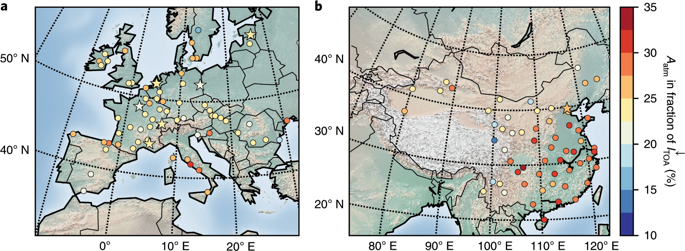Nature Geoscience ( IF 15.7 ) Pub Date : 2020-02-03 , DOI: 10.1038/s41561-019-0528-y M. Schwarz , D. Folini , S. Yang , R. P. Allan , M. Wild

|
The amount of solar (shortwave) radiation that reaches the Earth’s surface underwent substantial variations over recent decades. Since the 1950s, surface shortwave radiation gradually decreased at widespread locations. In Europe, this so-called surface dimming continued until the late 1980s, when surface brightening set in and surface shortwave radiation increased again. In China, the dimming levelled off in the 1980s, but did not turn into brightening until 2005. Changes in clouds and aerosol are the prime potential causes for the phenomenon, but the scientific community has not yet reached a consensus about the relative role of the different potential forcing agents. Here we bring together co-located long-term observational data from surface and space to study decadal changes of the shortwave energy balance in Europe and China from 1985 to 2015. Within this observation-based framework, we show that an increasing net shortwave radiation at the top of the atmosphere and a decreasing atmospheric shortwave absorption each contribute roughly half of the observed brightening trends in Europe. For China, we find that the continued dimming until 2005 and the subsequent brightening occurred despite opposing trends in the top-of-the-atmosphere net shortwave radiation. This shows that changes in atmospheric shortwave absorption are a major driver of European brightening and the dominant cause for the Chinese surface trends. Although the observed variations cannot be attributed unambiguously, we discuss potential causes for the observed changes.











































 京公网安备 11010802027423号
京公网安备 11010802027423号